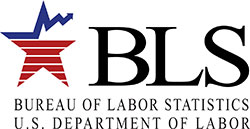For professionals who are considering an advanced healthcare master’s degree, you should understand the difference between becoming a Nurse Practitioner (NP) and a Physician’s Assistant (PA). These career paths share many similarities but they are different in some respects as well. Whichever you choose, both career paths provide excellent work possibilities and salaries, without making the major time commitment needed to become a doctor.
Basic Differences Between an NP and PA
A nurse practitioner is a more academically advanced nurse, and attends a nursing school and earns a Master of Science degree in Nursing (MSN), while a physician’s assistant attends a center of medicine or medical school. Because they attend different types of universities and programs, the focus of each profession differs somewhat.
An NP is a nurse, and this career path follows more of a patient-centered model. NPs stress disease prevention and health education, and also do assessment, diagnosis and treatment of patients. The NP may have more independence as they can do some duties without the supervision of a doctor.
A PA tends to follow a disease-centered model, where the stress is on biologic and pathologic components of health, but they also do assessment, diagnosis and treatment. PAs must work under the supervision of a doctor.
Another big difference between NPs and PAs is in the types of specializations that are available. An NP can work in a variety of specialities:
- Pediatrics
- Women’s health
- Mental health
- Neonates
- Geriatrics
PAs have a more general education, but they also can specialize, but typically in areas such as emergency medical care, general surgery and orthopedics.
NP vs. PA Details
So the above provides the general difference between these two careers, but let’s take a closer look at the particulars:
Employment
- Numbers: 110,000 NPs and 86,700 PAs practicing in US as of 2012.
- Pay: Mean annual wage for NPs is $95,000, and $94,300 for PAs.
- Expected job growth: 34% growth by 2024 for NPs, 38% for PAs in 2024.
- New positions expected by 2024: 37,100 for NPs, 33,300 for PAs
Requirements
- Degree requirements: NPs need a Master of Science in Nursing and state certification for the state where they want to practice; PAs need a Physician’s Assistant Master’s Degree from an accredited medical school or medical center, and also must be certified to practice in their desired state.
- Degrees available: NP can get an MSN or DNP from a nursing school. The DNP degree may become the standard for NPs in the future. For PAs, there are 170 PA programs in the US, and most are master’s programs.
- Program details: NPs usually select a speciality and must finish 500 to 700 clinical hours and 500 classroom hours; PAs are trained in general practice and must comee 1,000 classroom hours and 2,000 clinical hours.
- Accreditation: NP programs are accredited through the Commission on Collegiate Nursing Education (CCNE) or the Accreditation Commission for Education in Nursing (ACEN); PA programs receive accreditation through the Accreditation Review Commission on Education for the Physician Assistant (ARC-PA).
Certification/Licensing
- Certification: NPs obtain national certification in their speciality via the American Nurses Credentialing Center (ANCC) or the American Academy of Nurse Practitioners; PAs must pass the PA National Certifying Examination (PANCE) which is offered through the National Commission on Certification of PAs (NCCPA).
- Licensing: NPs must have an active RN license and a master’s or doctoral degree in nursing; PAs must have a master’s degree from an accredited school and national certification.
- Licensing agency: NPs are licensed through a state nursing board or board of medical examiners; PAs must be licensed through a state medical board or board of medical examiners.
Also, note that NPs usually work under the supervision of a doctor, but there are 250 practices in the US where NPs can work independently. Legislation is being promoted across the US to expand the number of states that let NPs to work on their own. Meanwhile, PAs may not work independently of doctors

















